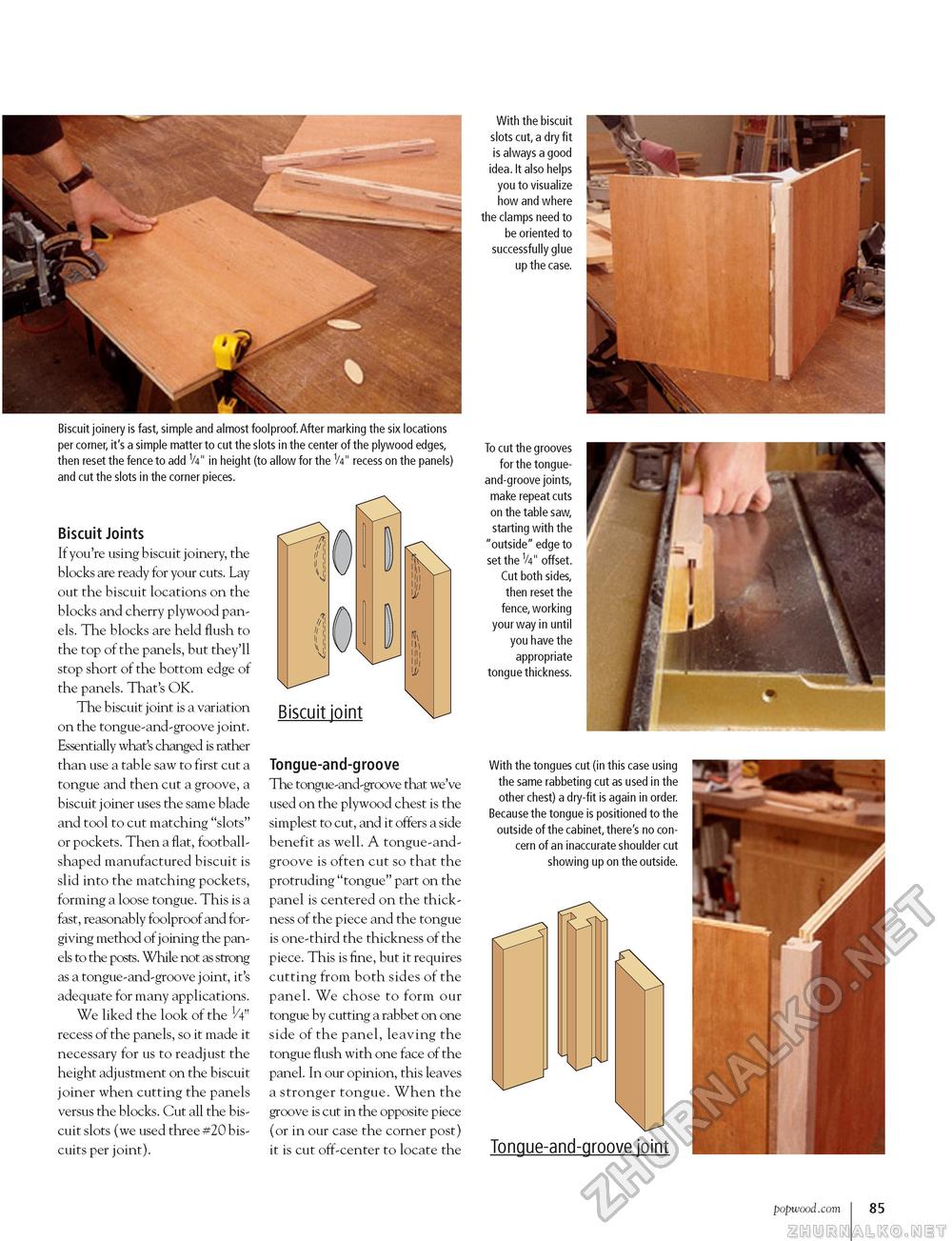Popular Woodworking 2003-04 № 133, страница 85
Biscuit joinery is fast, simple and almost foolproof.After marking the six locations per corner, it's a simple matter to cut the slots in the center of the plywood edges, then reset the fence to add 1k" in height (to allow for the V411 recess on the panels) and cut the slots in the corner pieces. Biscuit Joints If you're using biscuit joinery, the blocks are ready for your cuts. Lay out the biscuit locations on the blocks and cherry plywood panels. The blocks are held flush to the top of the panels, but they'll stop short of the bottom edge of the panels. That's OK. The biscuit joint is a variation on the tongue-and-groove joint. Essentially what's changed is rather than use a table saw to first cut a tongue and then cut a groove, a biscuit joiner uses the same blade and tool to cut matching "slots" or pockets. Then a flat, football-shaped manufactured biscuit is slid into the matching pockets, forming a loose tongue. This is a fast, reasonably foolproof and forgiving method of joining the panels to the posts. While not as strong as a tongue-and-groove joint, it's adequate for many applications. We liked the look of the V4" recess of the panels, so it made it necessary for us to readjust the height adjustment on the biscuit joiner when cutting the panels versus the blocks. Cut all the biscuit slots (we used three #20 biscuits per joint). Biscuit joint Tongue-and-groove The tongue-and-groove that we've used on the plywood chest is the simplest to cut, and it offers a side benefit as well. A tongue-and-groove is often cut so that the protruding "tongue" part on the panel is centered on the thickness of the piece and the tongue is one-third the thickness of the piece. This is fine, but it requires cutting from both sides of the panel. We chose to form our tongue by cutting a rabbet on one side of the panel, leaving the tongue flush with one face of the panel. In our opinion, this leaves a stronger tongue. When the groove is cut in the opposite piece (or in our case the corner post) it is cut off-center to locate the With the biscuit slots cut, a dry fit is always a good idea. It also helps you to visualize how and where the clamps need to be oriented to successfully glue up the case. To cut the grooves for the tongue-and-groove joints, make repeat cuts on the table saw, starting with the "outside" edge to set the V4" offset. Cut both sides, then reset the fence, working your way in until you have the appropriate tongue thickness. With the tongues cut (in this case using the same rabbeting cut as used in the other chest) a dry-fit is again in order. Because the tongue is positioned to the outside of the cabinet, there's no concern of an inaccurate shoulder cut showing up on the outside. Tongue-and-groove joint popwood.com 85 |








